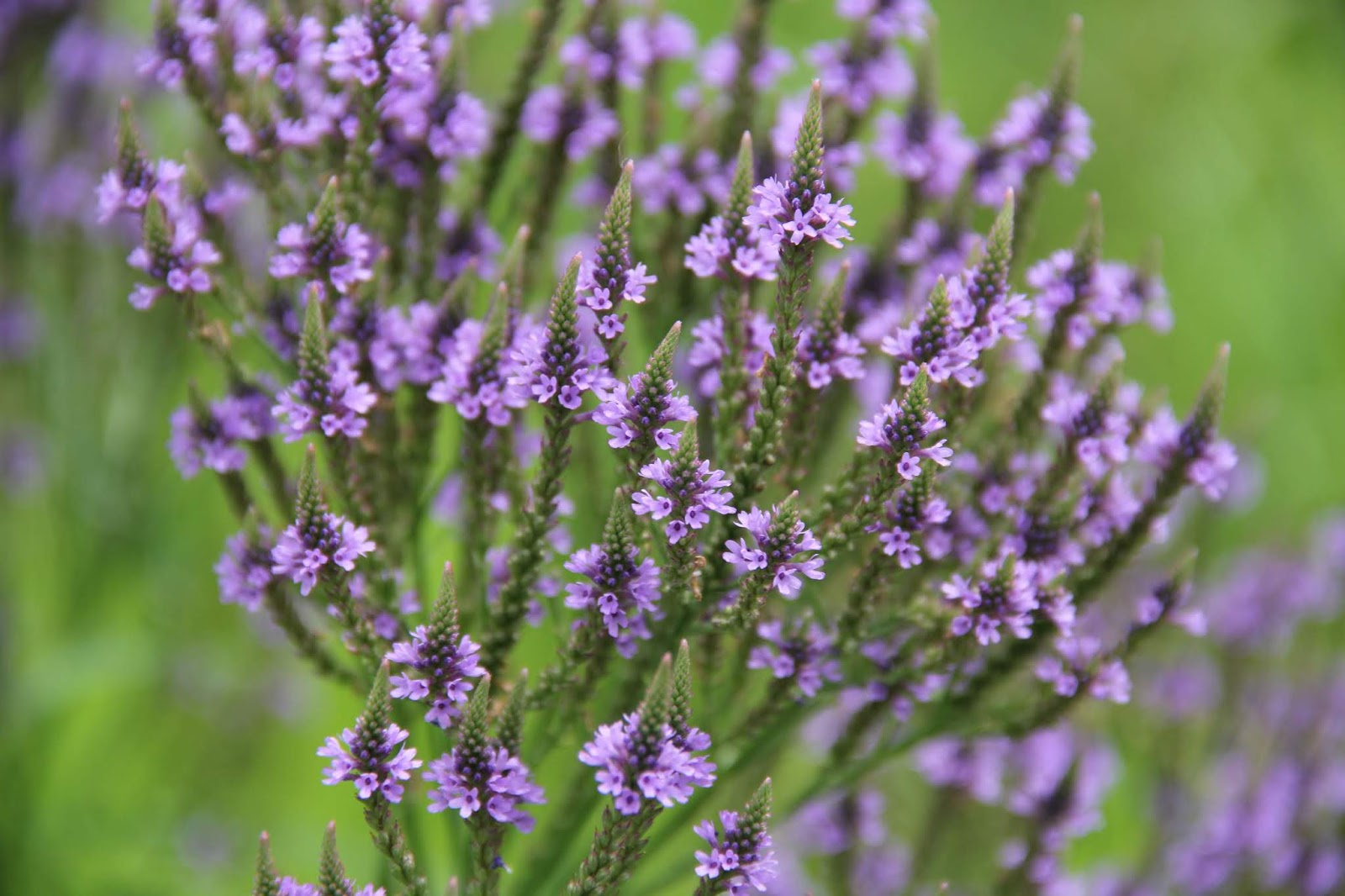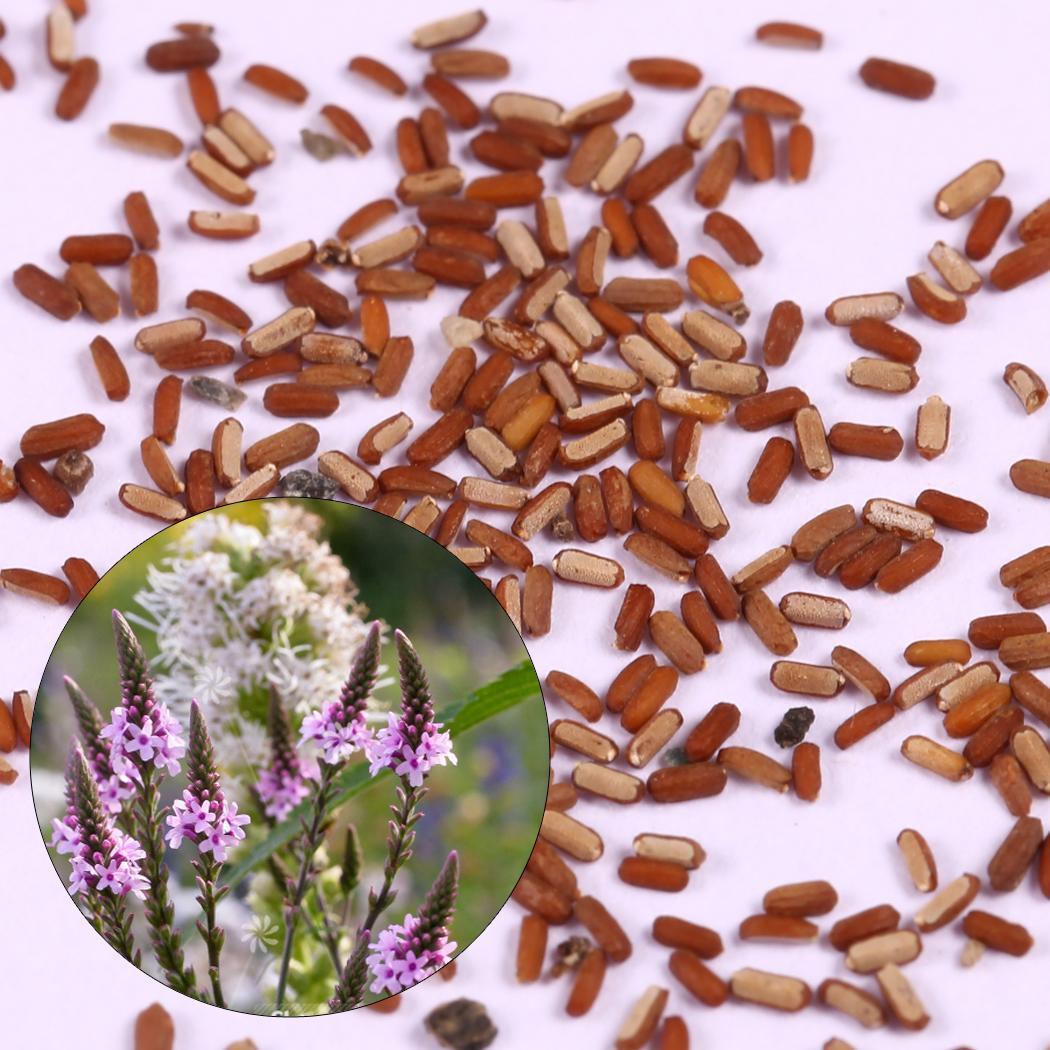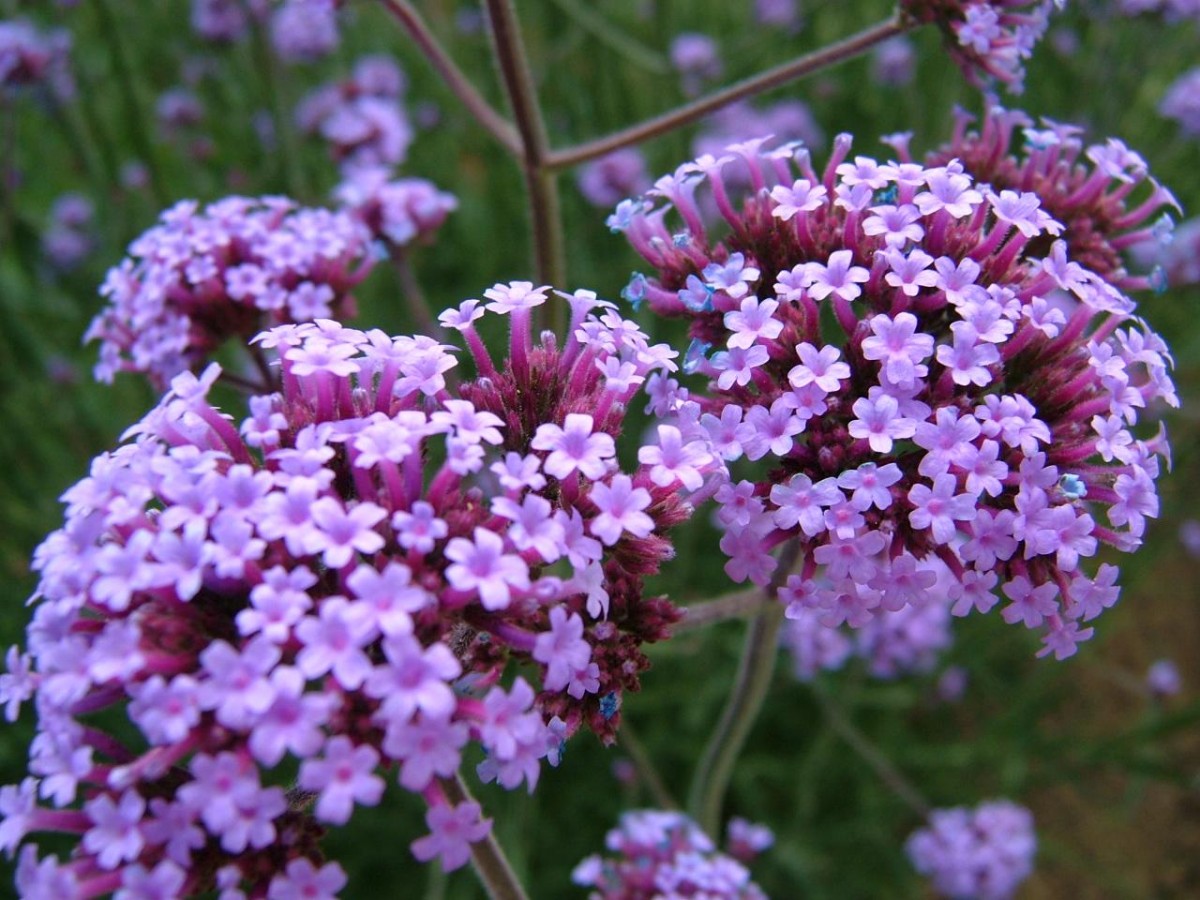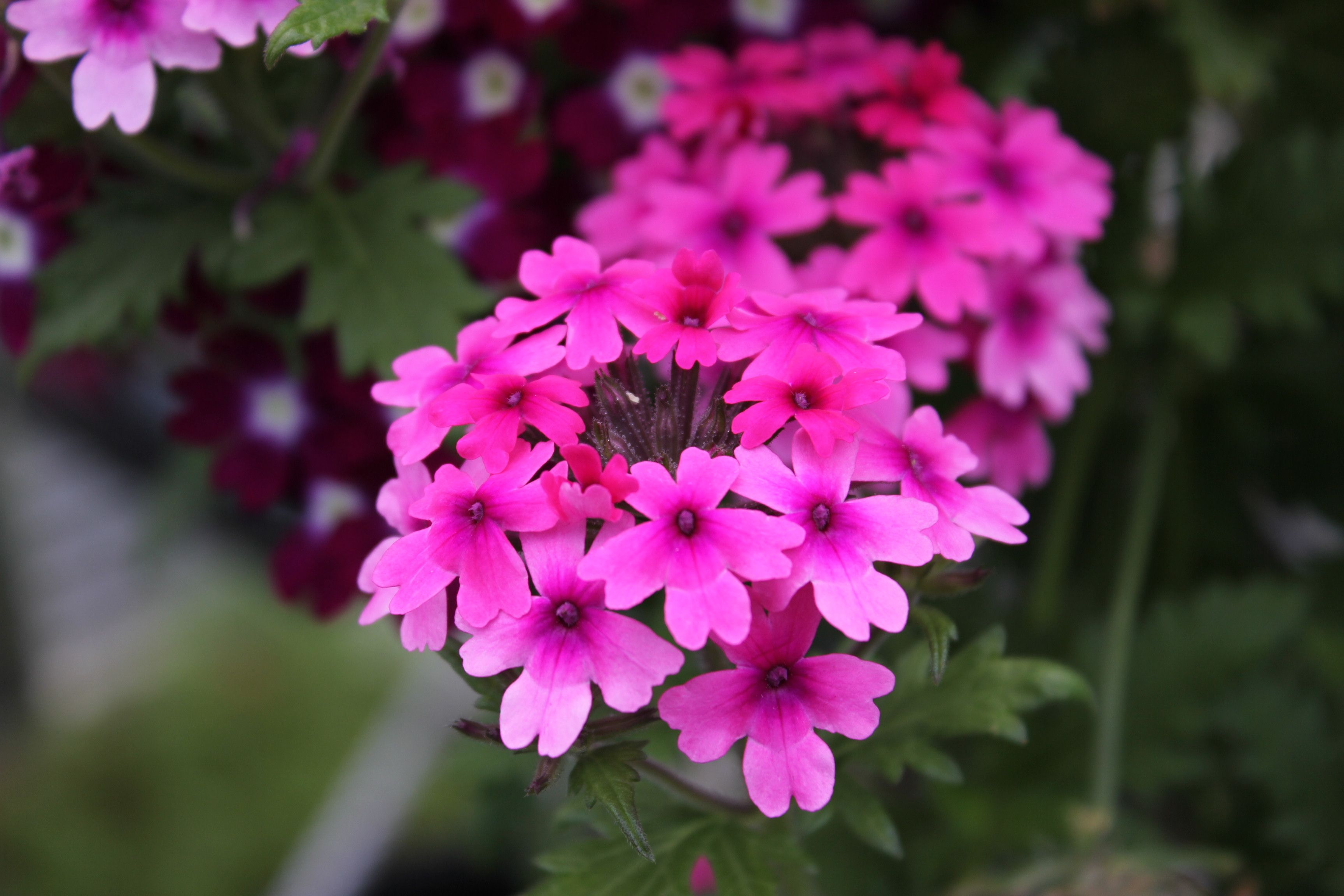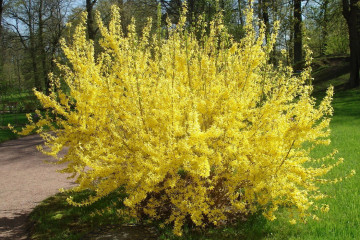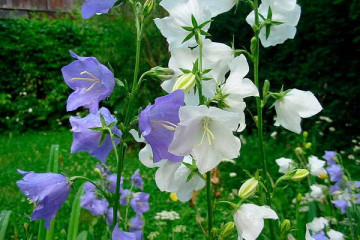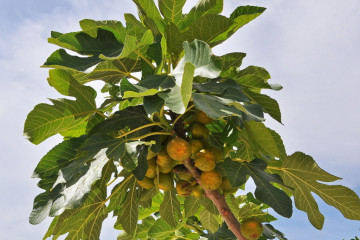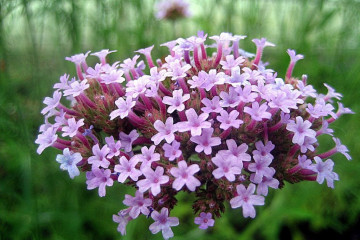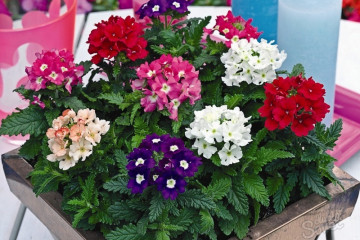Verbena, what is it: yellow, grass, perennial or annual
Content:
Verbena is a type of herbaceous plant. The flower has medicinal properties, helps with a list of various ailments, is medicinal. In the Middle Ages, they knew what verbena was and what properties it had. Often it was used to relieve fever and was widely used in dermatology, but the popularity of this flower in the modern world has faded and acquired a mythical character.
Description of the plant
Verbena can be perennial or annual. The medicinal species belongs to the Verbenov family. Thanks to its powerful roots, the plant reaches a height of more than 60-70 cm. The leaf plate has a rich green color. The verbena grass is covered with fine hairs, the stem is rectangular, straight, rough-bristly. At the end of the stem are spike-shaped inflorescences. The flowers change color and may appear purple or purple.
Flowering begins by early summer (June-July), and verbena begins to bear fruit at the end of summer, but often in early autumn (August-September). During ripening, the fruit is divided into four dry lobes, similar to brown nuts.
Verbena grows in light, humid and warm enough places. The culture is not whimsical to habitat conditions and is often located in the wild: along the coastlines of reservoirs, near roads, on wastelands, forest edges, in the sowing zone as a weed.
Varieties and types
Verbena is distinguished by an abundance of species and varieties.
Buenos Aires
This species is also called Argentine, or Bonar. This herbal variety can be perennial or annual, since this type of flower depends on the location. Located in colder regions, in Central Russia, it is annual, in a warmer and more natural climate, it is perennial.
Description:
- elastic and straight stems;
- reaches a height of up to 1.5 m;
- small paniculate inflorescences of a funnel shape (compound umbrella);
- inflorescences of purple or lilac color;
- artificial cultivation at home is permissible, does not require a garter and support.
Hybrid
Hybrid verbena has a wide range of colors, including orange, coral peach shades (perennial yellow verbena is often found with red blotches), as well as many plant forms:
- dwarf;
- ampelous;
- ground cover;
- tall.
The hybrid has a creeping or straight stem. On average, a flowering shrub grows from 15 to 60 cm and forms umbrellas of 35-40 flowers. Flowering occurs at the very beginning of summer and continues until the onset of frost. This species is resistant to diseases and low temperatures, not whimsical to care. Verbena in pots and flowerpots looks very impressive.
Lemon (aloisia three-leafed)
Lemon verbena is very different in appearance from medicinal. Its thin and very long branches have sharp, narrow and oblong leaves. Unlike the previous species, the leaves of this verbena, like the flowers, are very rare and few in number. Harvested twice a year (June and late August).
Description:
- reaches up to 2 m in height;
- rarely deciduous, but lush shrub;
- flowers are snow-white with a pink tint;
- emits a pleasant lemon scent.
Canadian
A feature of this shrub is its long-term flowering. Because of its cold tolerance, the perennial verbena can bloom until early November. It grows small in size 20-30 cm in height and has flowers of pink and white color. To grow at home, the conditions where the verbena grows must be met:
- bright, open meadow;
- watering once a week.
Hard
Verbena tough has very dense and rough leaves that resemble sandpaper. The leaves have depressed veins and are incised in a dull green color, 5-7 cm long. The inflorescence of the spike, consisting of the main spikelet and two spikelets on the sides. Verbena tough grows like a perennial or annual, depending on the location.
Chemical composition and pharmacological properties
Thanks to scientific research, a rich chemical composition has been revealed. Verbena is full of micro and macro elements, vitamins and essential oils, as well as:
- steroids (sitosterols);
- tannin;
- hastatosides;
- tannins;
- Ascorbic acid is mainly found in the deciduous part of the plant.
Due to the presence of verbenamine in the composition, the plant has medicinal and pharmacological properties:
- diaphoretic and anti-inflammatory;
- antiseptic and healing;
- antifebrile and antipyretic;
- normalizes metabolism;
- choleretic;
- antiallergenic.
Glycosides in Verbena:
- work as antioxidants;
- activate the immune system;
- used as a prophylactic agent for varicose veins and thrombophlebitis;
- soothe the nervous system in case of sleep disorders, excessive irritability, chronic fatigue.
Prescriptions and contraindications
How to make an infusion of verbena officinalis: 3 tbsp. tablespoons of chopped dried verbena pour 0.5 liters of boiled water (more than 90 ° C) and leave for 3-4 hours. Then strain through cheesecloth or thick calico. Use warm externally (as a lotion).
How to prepare an infusion for mouthwash: add 1 tbsp to 200 ml of boiling water. a spoonful of crushed plants, leave for 50-60 minutes. Gargle every 2-3 hours daily until symptoms disappear completely. The same solution can be used internally at 80-90 ml in 30 minutes. before meals 3-4 times a day (with lethargy, fatigue).
Contraindicated and may be harmful to pregnant women and children.
Legends, myths, beliefs
There are a huge number of legends and beliefs about this magical flower. The beneficial properties of verbena are also shown in unconventional use.
Ancestors from ancient times knew what kind of verbena herb, they believed: it will save you from many troubles and evil, will help to reveal the gift of clairvoyance. For protection, they created amulets, amulets, or simply dried the plant in bags, and then hung it on a thread.
In magic, it is also relevant:
- having planted near the house, the owner attracts wealth to him;
- fortune-tellers believe that the smell of verbena is similar to some aphrodisiac scents;
- on the neck, a verbena amulet protects from the evil eye;
- and it helps the sorcerers to deprive the opponent of the gift of clairvoyance.
Ordinary, as it may seem at first glance, the herb, but it is considered sacred. And this is really so: it will save, improve health. What kind of plant is verbena? This is a real amulet and talisman, and, in addition, a beautiful and colorful flower.
